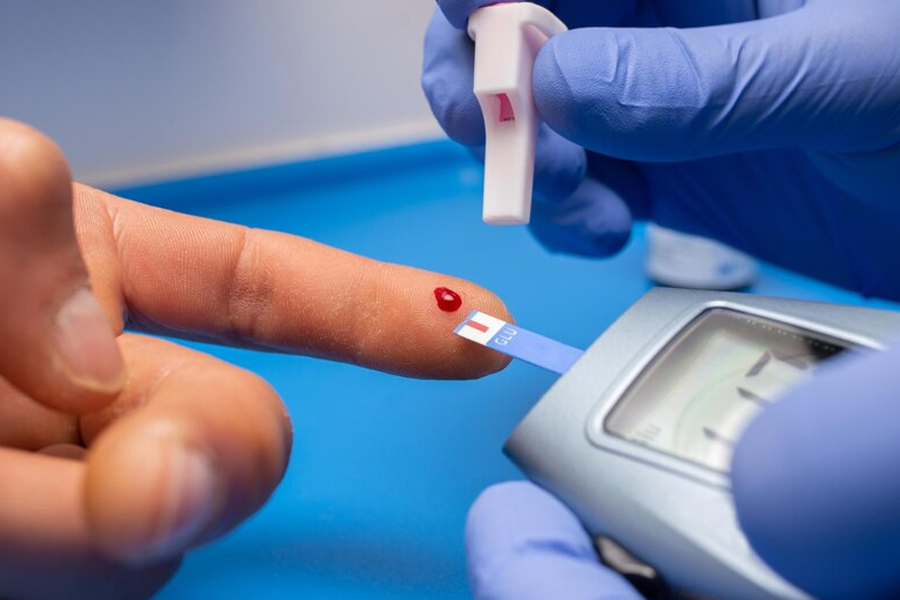
Waking up to a high blood sugar reading can be a frustrating start to your day, especially when you've been vigilant about your diet and exercise. This early morning spike in blood sugar, known as the dawn phenomenon, is a common occurrence among people with diabetes. But what exactly causes this phenomenon, and what can you do to manage it? If you are going through this problem, read this article to unfold the science behind this early morning mystery.
Table of Content:-
To understand the dawn phenomenon in depth, OnlyMyHealth spoke to Dr Vimal Pahuja, Consultant Metabolic and Diabetic Physician, Dr L H Hiranandani Hospital, Powai, Mumbai.
Explaining the condition, Dr Vimal Pahuja said, “The dawn phenomenon is when the blood glucose levels rise in the morning, commonly between 2:00 am and 8:00 am. This is seen in both type 1 and type 2 diabetes and differs from the Somogyi effect, which is associated with hypoglycemia followed by the aid of a relapse of diabetes.” Here is a detailed description of the morning phenomenon given by Dr Pahuja.
Symptoms of Dawn Phenomenon

- High blood glucose ranges in the morning (normally mentioned after waking up).
- Tired even after getting sufficient sleep.
- Sometimes blurry vision and persistent headache.
Also read: High Blood Sugar Levels In Summer: Expert Shares 9 Unusual Signs That May Go Unnoticed
Causes of Dawn Phenomenon

Morning hormonal modifications are typically accountable for the dawn phenomenon. According to Dr Pahuja, hormonal surges like cortisol, glucagon, etc resulting in a rise in glucose production by the liver in the morning. “These hormone surges additionally decrease the insulin sensitivity which means that the frame desires more insulin to hold strong blood glucose stages,” Dr Pahuja added.
Generally, the hormonal changes your body goes through in the morning boosts your blood sugar levels if you are not diabetic. Research has shown that your body makes more insulin to balance out your sugar levels if you’re not diabetic but if you are, your body does not respond to insulin the same, leading to high blood sugar levels in the morning.

A report by WebMD reads, “The boost in sugar is your body's way of making sure you have enough energy to get up and start the day. If you have diabetes, your body may not have enough insulin to counteract these hormones. That disrupts the delicate balance that you work so hard to keep, and your sugar readings can be too high by morning.”
Management and Rectification
There are several approaches to address the dawn phenomenon, depending on whether you've got type 1 or type 2 diabetes. Dr Pahuja helps us list down some steps on managing the dawn phenomenon.
For type 1 diabetes

1. Change insulin level: It can be helpful to exchange the timing or dosage of lengthy-acting insulin or use an insulin pump with basal fee adjustment. Short-acting insulin taken in the morning will also be taken into consideration.
2. Continuous Glucose Monitoring (CGM): CGM can be used to assist come across high morning glucose tiers, intervening promptly.
3. Medication modifications: In a few cases, different medications that affect blood sugar stages may additionally need to be changed.
4. Meal adjustments: A low-carbohydrate meal before bedtime can assist in manipulating blood glucose tiers.
Also read: When Is The Best Time To Check Blood Sugar Level If You Have Diabetes?
For type 2 diabetes

1. Timing and adjustment of dosage: Changing the timing or dosage of diabetes medications including metformin or sulfonylureas can assist.
2. Lifestyle modifications: Regular exercise and a balanced weight loss program can enhance common glucose management.
3. Monitoring: Glucose monitoring, mainly in the morning, can help become aware of medicines or their existence and guide you regarding any modifications.
4. Consistent sleep schedule: Maintaining an everyday sleep timetable can assist control of blood sugar levels.

Avoiding the dawn phenomenon
While it could now not be possible to avoid the dawn phenomenon, the subsequent strategies can assist minimize its effects.
- Monitor blood glucose levels at extraordinary times in the day and night.
- Take your diabetes medicine as prescribed and talk about any modifications together with your fitness care issuer.
- Healthy diet intake on time with lots of veggies and natural stuff.
Conclusion
The dawn phenomenon is a common problem in individuals with both types of diabetes because of hormonal modifications. Dr Pahuja concluded, “The best way to prevent it is to continuously monitor, taking medicines on time and healthy diet intake is best. Visiting your doctor for regular checkups is a must to tailor management techniques.”
Also watch this video
How we keep this article up to date:
We work with experts and keep a close eye on the latest in health and wellness. Whenever there is a new research or helpful information, we update our articles with accurate and useful advice.
Current Version